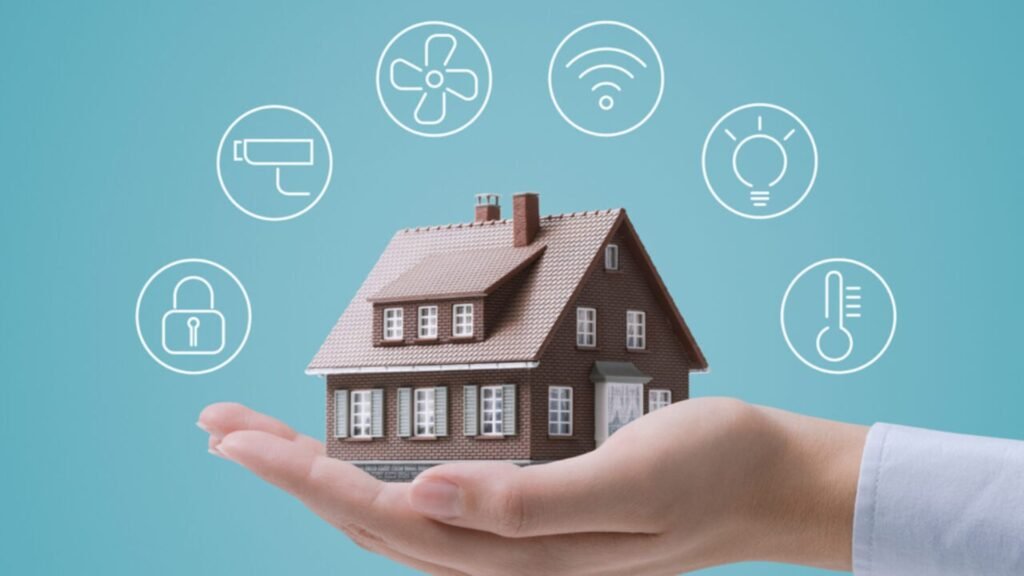Tips for Setting Up a Smart Home System
Setting up a smart home system can enhance your lifestyle by offering convenience, security, and energy efficiency. With the right approach, you can create a connected home that meets your needs and preferences. Here are some tips for setting up a smart home system.

Define Your Goals
Before you start purchasing smart devices, it’s important to define what you want to achieve with your smart home system.
- Identify Needs: Determine what aspects of your home you want to automate, such as lighting, security, or climate control.
- Set Priorities: Decide which features are most important to you, like voice control, remote access, or energy monitoring.
Choose a Central Hub
A central hub acts as the brain of your smart home system, connecting and managing all your smart devices.
- Select a Compatible Hub: Choose a hub that is compatible with the devices you plan to use. Popular options include Samsung SmartThings, Amazon Echo Plus, and Google Nest Hub.
- Consider Integration: Ensure the hub integrates with other smart home ecosystems, like Amazon Alexa, Google Assistant, or Apple HomeKit.
Start with Essential Devices
Begin with essential devices that offer significant benefits and build your smart home system gradually.
- Smart Lights: Install smart bulbs or smart plugs to control your lighting remotely and set schedules.
- Smart Thermostat: Use a smart thermostat to manage your home’s temperature and save on energy costs.
- Smart Security Cameras: Install smart security cameras to monitor your home and receive alerts on your smartphone.
Ensure Compatibility
Check that all your smart devices are compatible with each other and the central hub to avoid connectivity issues.
- Verify Device Compatibility: Read product descriptions and reviews to ensure devices work with your chosen hub and other smart home systems.
- Update Firmware: Regularly update device firmware to improve compatibility and security.
Set Up Voice Control
Voice control can simplify managing your smart home devices and create a more intuitive experience.
- Choose a Voice Assistant: Select a voice assistant like Amazon Alexa, Google Assistant, or Apple Siri to control your devices.
- Configure Voice Commands: Set up voice commands for common tasks, such as turning on lights, adjusting the thermostat, or locking doors.
Focus on Security
Securing your smart home system is crucial to protect against potential cyber threats.
- Use Strong Passwords: Set strong, unique passwords for your smart devices and accounts.
- Enable Two-Factor Authentication: Use two-factor authentication (2FA) where possible to add an extra layer of security.
- Regularly Update Devices: Keep your smart devices’ firmware and software up-to-date to patch security vulnerabilities.
Optimize Your Network
A stable and strong internet connection is essential for the smooth operation of your smart home system.
- Upgrade Your Router: Ensure your router supports the latest Wi-Fi standards and has adequate coverage for your home.
- Use Mesh Networks: Consider a mesh Wi-Fi system to extend coverage and reduce connectivity issues for smart devices.
Automate Routines
Automating routines can enhance convenience and efficiency in your smart home system.
- Create Scenes: Set up scenes for different activities, such as “Movie Night” or “Good Morning,” to control multiple devices with a single command.
- Schedule Actions: Use scheduling features to automate tasks like turning on lights at sunset or adjusting the thermostat at specific times.
Integrate with Existing Systems
Integrate your smart home system with existing systems for a seamless experience.
- Connect Smart Appliances: Connect smart appliances, such as refrigerators and washing machines, to your network for remote control and monitoring.
- Link to Home Security: Integrate your smart home system with existing home security systems for enhanced protection and control.
Monitor and Manage
Regularly monitor and manage your smart home system to ensure it operates smoothly and meets your needs.
- Use Mobile Apps: Utilize mobile apps provided by device manufacturers or the central hub to monitor and control your smart home system.
- Review Usage Data: Check usage data and analytics to optimize device performance and adjust settings as needed.
Conclusion
Setting up a smart home system involves defining your goals, choosing a central hub, and starting with essential devices. Ensuring compatibility, focusing on security, and optimizing your network are key steps to creating a functional and secure smart home. By automating routines and integrating with existing systems, you can enhance your home’s convenience, efficiency, and safety.


